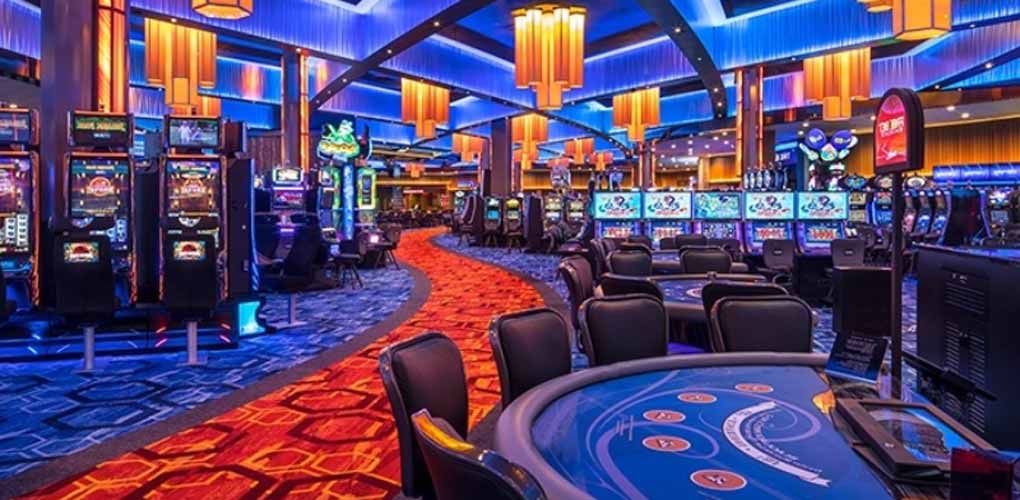The Way Gambling Games Serve Various Player Categories

Gambling games have consistently attracted various types of players, offering not only the thrill of chance but also a distinct experience designed for different types of players. Ranging from strategic players who excel at strategic thinking to recreational players in search of entertainment, casinos are aware of the details of their audience and design games that meet these diverse tastes.
In investigating the world of casino games, we encounter a variety of options that interest every kind of player. Poker tables with high stakes draw competitive individuals, while exciting slot machines attract those seeking quick rewards. Whether it’s about the lure of winning large or simply savoring the social atmosphere, casinos tailor their game offerings to ensure that everyone can find their niche where they feel comfortable and engaged. Comprehending how these games cater to various player types can enhance not only our appreciation of them but also our approach to choosing which games to play.
Understanding Gamer Categories
In the multifaceted world of casino games, players can be grouped into separate kinds based on their motivations and likings. These player categories range from the relaxed and community-oriented gamers, who enjoy the enjoyment value and interactive connections that gambling provides, to the more analytical and methodical players, who seek to increase their chances and gains. Grasping these different player types is essential for casinos to tailor their offerings and design captivating environments.
One frequent type is the group-oriented player, who views casino games as a form of social interaction and enjoyment rather than a serious gambling pursuit. These participants often enjoy games that encourage participation and camaraderie, such as blackjack. Their attention is on the experience rather than the outcome, so dynamic atmospheres and mutual moments are what they hold dear the most.
On the other end of the scale, strategic players are motivated by contest and the search of ability. They tend to gravitate toward games that necessitate tactical planning and strategy, such as strategic card games, where their skills can influence the outcome. This type often interacts with the games on a deeper level, utilizing knowledge and tactics to achieve an edge. Comprehending these motivations allows casinos to design environments and game selections that address to each player’s unique choices.
Strategies for Game Design
Casino games are designed with diverse player types in mind, employing various strategies to attract and engage them. For casual players, the focus is on simplicity and ease of understanding. Games like slots are often visually appealing with simple mechanics. This allows players to enjoy the gameplay without a steep learning curve, fostering an inviting atmosphere. The bright colors, engaging audio, and themes create a playful environment where players can quickly get immersed and entertained.
For strategic players who enjoy a more profound level of engagement, games such as poker and 21 offer depth and skill-based elements. These games incorporate strategy and tactical choices, attracting to players who thrive on challenge and want to exercise their mental skills. The design of these games regularly includes intricate rules and mechanics that test players to refine their skills and develop strategies over time, resulting in a rewarding experience for those who appreciate perfecting the game.
Moreover, social players are catered to through games that emphasize engagement and community. This includes live dealer games and multiplayer games, which cultivate a sense of community among players. The design of these games often includes communication tools and social elements, allowing players to interact and exchange insights. By building an environment where interaction is encouraged, casinos can effectively involve community players, making the gaming adventure more pleasurable and unforgettable.
Improving Participant Experience
Gambling options have progressed significantly to create a much more engaging atmosphere for participants. Application designers focus on stunning graphics, dynamic soundscapes, and novel gameplay mechanics that engage participants into the gaming environment. By leveraging technology, such as virtual reality and enhanced reality, betting houses ensure that participants feel as if they are part of a thrilling experience, enhancing not just the pleasure of the games but also the overall experience of being in a gambling venue.
Player interaction is another critical element in boosting gamer satisfaction in casino options. Many games are crafted to encourage engagement among participants, whether through multiplayer formats or chat features. This social aspect attracts players who like connecting with fellow players while competing, promoting a community vibe community. Furthermore, interactive elements can consist of leaderboards, competitions, and rewards for collaborative play, which capture competitive gamers and inspire them to return for additional. 5MB
In conclusion, tailoring plays a crucial role in adapting the engagement for various player types. Betting companies and software designers study player behavior and tastes to offer customized game options and incentives. By understanding the distinct tastes of gamers, gaming establishments can present tailored promotions, bonuses, and new game releases that appeal to each participant, thus boosting their overall satisfaction and devotion to the betting establishment.